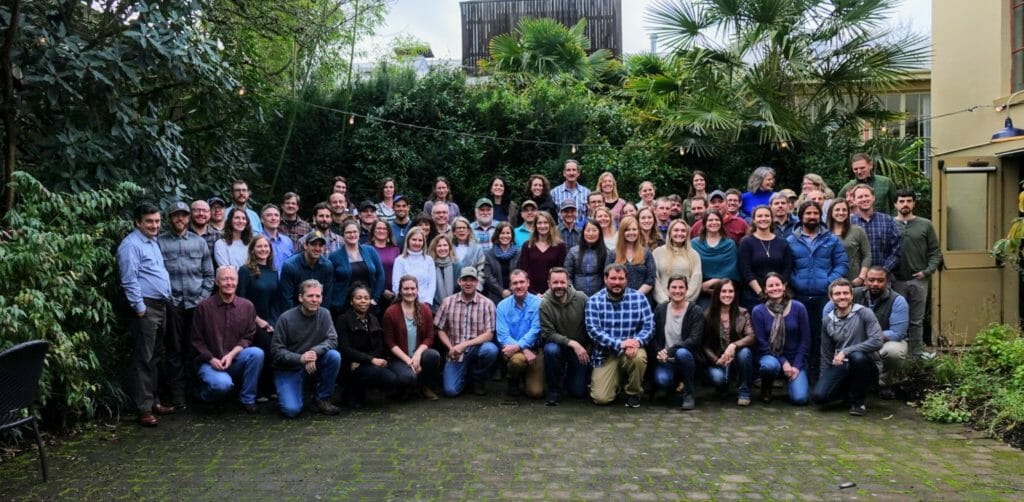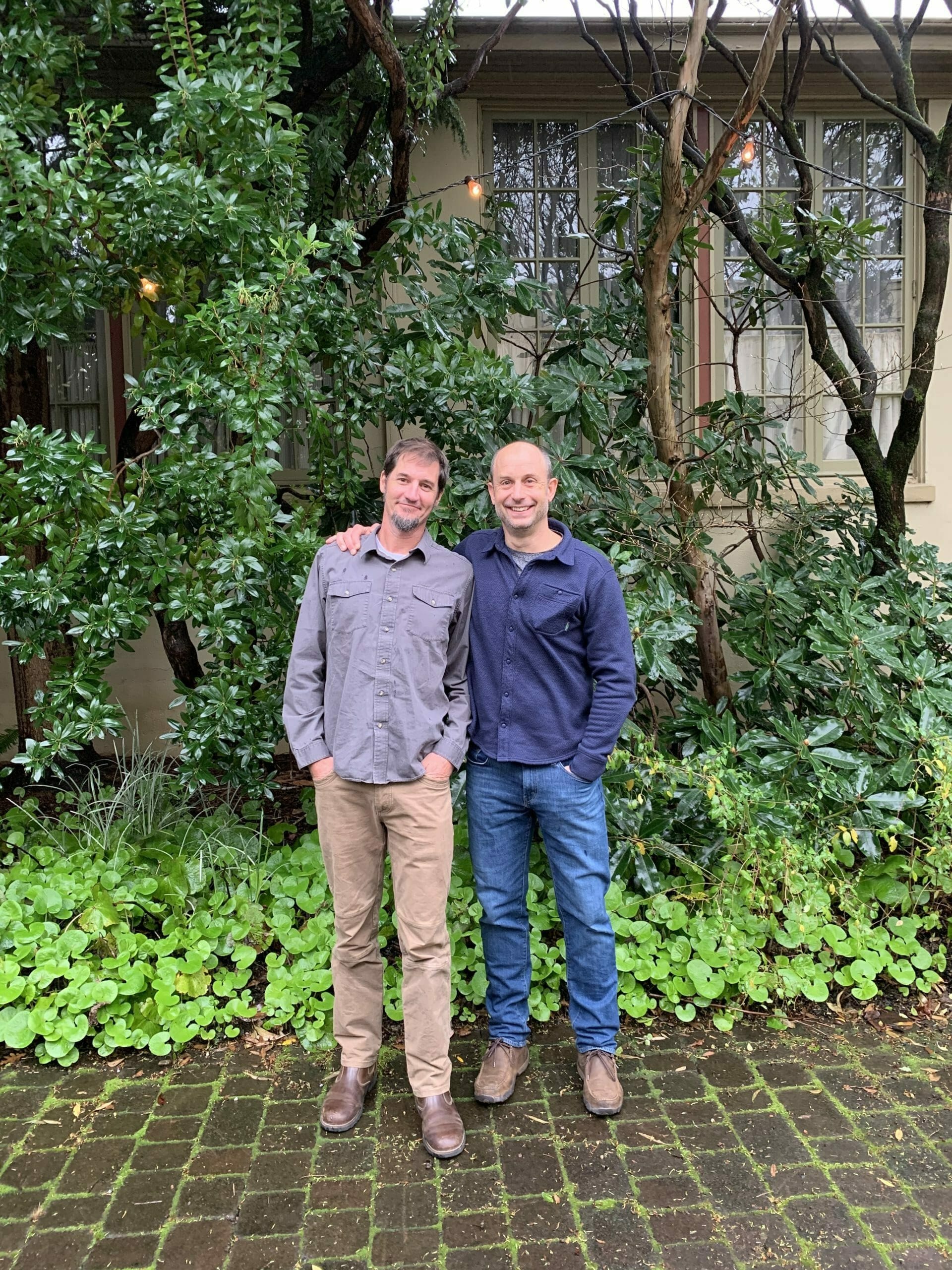Trout Unlimited members, and many of our staff, love to fish. Perhaps none more than Scott Yates and Warren Colyer, both of whom co-lead our largest staff cohort, the Western Water and Habitat program.
One of my favorite memories at TU was fishing on Wyoming’s Gros Ventre River at dusk. I was working the far bank for a decent fish that was sipping flies in an eddy. I heard a commotion above me on the trail, and it was Scott, a former college hoop player, sprinting, and I mean sprinting, even though he was all wadered-up, to get to the next pool before darkness fell.
Another image is of fishing with Warren near the White River in Colorado. Warren belly crawled twenty yards on elbows and knees to a pool in a spring creek where a massive brown trout lay. He managed to hook that fish, but only for a moment. And, then it was gone. Warren mentioned that fish whenever I saw him for years.
One of our founders, Art Neuman used to say, “Take care of the fish, and the fishing will take care of itself.” Art understood that quality fishing does not simply happen. It is the result of people making conscious decisions to protect, reconnect, and restore rivers and streams. Today, we shorthand Art’s counsel to our work by simply saying, “We make fishing better.”
The reality, however, is that we do much, much more than make fishing better.
Our work makes communities more resilient to the effects of flood, fire and drought. We make conservation more durable by working with diverse partners such as farmers and ranchers, mining companies, and state and federal agencies, among many others. We make conservation reach further by leveraging scarce resources. We make communities stronger by bringing together traditional adversaries to protect and restore that lands and waters that sustain our great nation.
Almost from the very beginning of the Western Water and Habitat program 20 years ago, Scott and Warren have been at the tip of the spear implementing Trout Unlimited’s approach to collaborative stewardship.

They stopped by my hotel in Portland after returning from a weekend of fishing together in Washington and met me for a beer before their team retreat. We laughed at the bartender’s reaction to Scott’s request for a Bud Light in Portland, Ore., the craft brew capitol of the world. Warren talked about another time he went to Portland and ended up in a Portland hotel bar seated next to the great Portland Trailblazers guard, Damian Lillard.
Eventually, I asked them what I should say to their team the next morning. Warren mentioned that due to our rapid growth, many people in their program are relatively new to TU, and he counseled sticking to some of the big wins over the years such as our agreement to remove the four dams on the Klamath in 2022, or the Windy Gap bypass on the Upper Colorado, or the Idaho Roadless Rule.
We recalled the story of American Fork Canyon—an abandoned mine clean-up that we finished in 2008. We were looking for a place to demonstrate how ridiculously challenging it was for would-be Good Samaritans, organizations such as Trout Unlimited who had no part in creating abandoned mines, to clean them up. It took us more than two years to negotiate the clean-up agreement on the American Fork with the federal government. It took eight days to clean the waste up.
Eight days.
Scott grew serious and said, “We have created so much political capital and good will through our work in rural communities around the West. But what’s the use of having political capital if you aren’t willing to spend it?”
Scott and Warren, quietly, and without any fanfare, have led efforts to do more for trout, salmon, and steelhead than probably any other two people in the nation. But Scott’s question is the right one.
Last week, the EPA announced new rules that would remove protections for small headwater streams from the Clean Water Act.
Snake River salmon and steelhead continue their slow slide into extinction because of our collective unwillingness to address the central challenge to their survival—that we built four concrete monoliths smack-dab in their migration corridor on the lower Snake River.
We know how to recover polluted rivers by starting in their headwaters and working our way down—eliminating the straight pipes that used to convey pollution, and regulating roads, pipelines, subdivisions, and lagoon ponds on farms. And, scientists have repeatedly said that the best way to recover robust and fishable populations of Snake River salmon and steelhead is to remove the four lower Snake River dams.
Scott and Warren both would be quick to say that we also need to listen to farmers and ranchers and ensure that clean water rules are clear and predictable so that agricultural interests know what is expected of them. They would also say that the only way to recover Snake River salmon is by TU becoming advocates for those who benefit from the dams today, and ensuring they are made whole when we remove them tomorrow. In return, those communities will become advocates for the return of Idaho’s wild fish.
As we left the bar and they headed to meet their team, Warren turned and said, “You know, it shouldn’t be so hard to meet the needs of people, and the needs of our rivers and streams. They ought to be the same. In the end, they are the same.”
Chris Wood is the president and CEO of Trout Unlimited.



